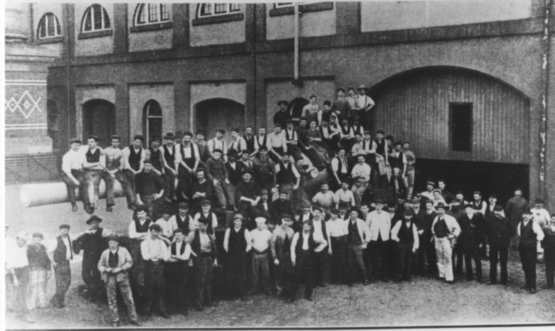- Author
- Rivett, Norman C
- Subjects
- History - WW2
- Tags
-
- RAN Ships
- None noted.
- Publication
- June 2009 edition of the Naval Historical Review (all rights reserved)
During the First World War many Garden Island employees wished to volunteer for service with the Armed Forces but were dissuaded by the Management, being told that they were doing essential war work and should stay on in the Dockyard. However, Management said that because they had expressed the wish to volunteer for service overseas, their intentions would be recorded in their favour. So far as I know, however, these assurances were verbal only.
With the passing of the Returned Servicemen’s Preference Act and the ending of the War, many returned men applied for work at Garden Island and got it, displacing many employees who were not covered by the Act.
Dan Craig, whose place was on our largest lathe in the Machine Shop, applied to the Engineer Manager, Commander George Starr, R.N, for some official written assurance that he would not be discharged if some returned serviceman covered by the Preference Act applied for his job. He pointed out that he had wanted to enlist but was restrained from doing so by Management who said that he was doing essential war work, that he could not be spared, but that his records would note his intentions and that his job would be thereby safeguarded.
Starr said, ‘Right, we will ask the Navy Office for an official assurance that as a Garden Island War Worker you will not be discharged’. A letter was drafted accordingly.
Predictably, the application failed to get a satisfactory assurance from the Navy Office.

The issue of employment for ex-servicemen was a politically-charged issue and any response might stir up a hornet’s nest. Starr informed Craig that they would apply again and keep on applying until they got a satisfactory assurance. The correspondence grew into quite a file.
Commander Starr RN already had a reputation for taking various Managements to task and making his case heard, even if Management did not want to listen. In the post-war period, thousands of medals were being issued to all serving personnel. There were even large bronze medals for the families who had lost a loved one, known as ‘dead men’s pennies’. Starr, tongue-in-cheek, suggested that a Special Medal be struck for Garden Island War Workers as a permanent record of their war service, and as proof that they were restrained from enlisting for overseas service by the needs of Government back home. To Starr’s amazement the answer came back from the Navy Office, ‘Approved – Submit a Suitable Design’.
Starr was a resourceful man. He took a silver coin – a half-crown – and had it ground smooth on both sides. He retained the milled edge, and on the obverse side he silver-soldered a Navy button. On the reverse side a suitable inscription was engraved saying that the medal was awarded to ‘_____, Garden Island War Worker 1914-1918’, in appreciation of his war effort and the fact that he served the country at home. Also inscribed on the reverse side just inside the milled edge were engraved the Latin words ‘Ditera Scripta Manet’. The whole medal was then silver-plated and had quite an attractive and convincing appearance.
The Commodore Superintendant, H. M. J. Edwards, RN, a very formal executive type of officer, approved the design in general but asked, ‘What does the Latin inscription mean?’ Starr explained that it translated as ‘the written word remaineth’. In other words, ‘If you’ve got it in writing, you’re right’. Edwards responded briskly. ‘Well, I’m afraid that we can’t have that. Make another medal but omit the Latin’.
Perhaps Starr’s strategy had been to lose a battle but win the war. The Latin was removed but the medal was approved by the Naval Board.
In due time the whole of the Garden Island work force was fallen in forming three sides of a hollow square outside the entrance door leading from the Dockyard to the Main Office building. The workers never used this entrance. It was reserved for Management. The doors duly swung wide and from the bureaucratic interior emerged the Commodore Superintendent, attended by his staff and the heads of the Dockyard Departments. The Commodore made a fine speech then ceremonially presented Dan Craig, Garden Island War Worker, with his medal.
A sequel to this incident came after Starr had retired to his farm in Sussex, England. He was visited by a famous numismatist who claimed to know the history of every medal struck by the British Empire. Starr had kept the War Worker Medal, Mark I, with its Latin inscription as a souvenir of his days at Garden Island. He produced it and challenged the numismatist to tell him the history of that one. The expert admitted defeat and Starr, characteristically, did not enlighten him.




